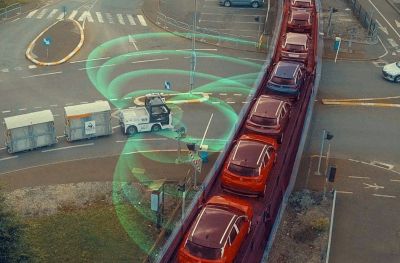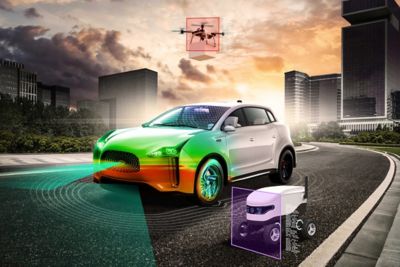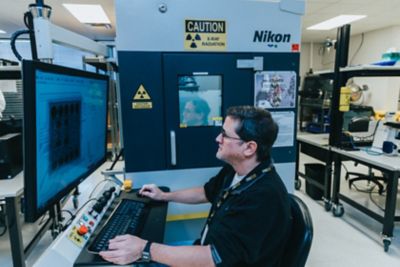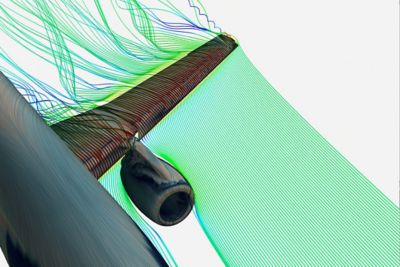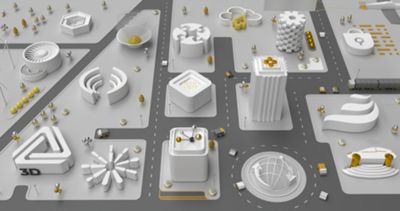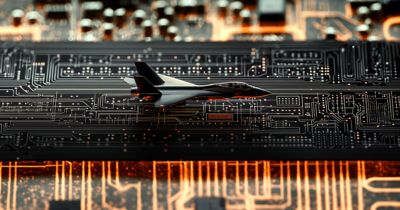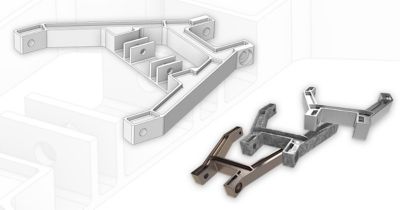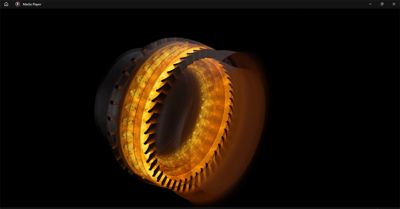As the Sun sets on a clear night, a hush comes over a crowd. Spectators and engineers alike stare as a nearly 100-foot-tall rocket begins its ascent into the skies above, bright flames trailing behind it.
In another mission, a launch vehicle with a higher payload carries a lunar lander, which will deliver an important payload to the lunar surface, or maybe it’s transporting an orbit vehicle to low Earth orbit (LEO), where it can support responsive hosting, rideshare, and delivery missions.
Historically, all these elements would have been developed by different companies, but this does not have to be the case. Firefly Aerospace acts as an end-to-end space transportation company that can do all that — and more — to achieve its mission of enabling our world to launch, land, and operate in space. Firefly designs and builds most of the components that it uses in-house, including its own avionics. Firefly’s products are designed to be interchangeable for use in all its projects.
To achieve this, Firefly draws on a team that has truly multidisciplinary skills. Brigette Oakes, vice president of engineering at Firefly, shares that Firefly’s expertise includes mechanical engineering and composite structures, electrical engineering, avionics, software engineering (including ground software, flight software, and embedded systems), propulsion engineering for engines, and systems engineering.
It is only by using this versatile team that Firefly can create its unique industry-leading products and achieve its goals.
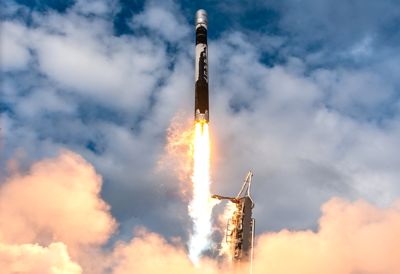
Firefly’s Alpha rocket Credit: Firefly Aerospace.
An Inside Peek at Firefly's Products in Launch, Land, and Orbit
Firefly’s products, which are designed at its designated facilities, come in three main categories.
First, there are Firefly’s two launch vehicles:
- Alpha, a small-lift rocket with a unique carbon fiber design. Alpha is intended to support commercial, civil, and national security missions in LEO.
- A medium-launch vehicle (MLV) that will be able to support applications such as space station resupply missions and commercial spacecraft. MLV will be a two-stage rocket, with stage one using the Miranda engine and stage two using the Vira engine. It’s also designed with reusability in mind, having both a return-to-launch site (RTLS) and a propulsive landing of the first stage.
When developing both launch vehicles, Firefly focused on ensuring that their designs were reliable, responsive, and affordable. In parallel to these products, Firefly also developed five engines with a range of about 45,000 pounds to 230,000 pounds of thrust. “If you like propulsion, you are a kid in a candy store here,” says Oakes. As is the Firefly way, these engines are scalable and can be modified to fit specific mission needs.
The next category is lunar landers. Firefly’s lunar lander, the Blue Ghost spacecraft, promises to deliver and host payloads anywhere on the Moon’s surface. In terms of compatibility, Blue Ghost can be used alongside MLV and Firefly’s orbital vehicles to fully support end-to-end cislunar services.
Blue Ghost is part of the NASA Commercial Lunar Payload Services (CLPS) program that flew to the Moon in early 2025 on Falcon Nine. Participating in CLPS “opens a door for us to do continuous and sustainable missions to the Moon,” says Oakes.
Finally wrapping up Firefly’s end-to-end space transportation services are its Elytra orbital vehicles. Firefly offers three types of Elytra vehicles:
- Elytra Dawn, which provides rapidly available platforms for on-orbit hosting, rideshare, and LEO delivery
- Elytra Dusk, which provides autonomous platforms for responsive on-orbit tasking and mobility from LEO to geostationary Earth orbit (GEO)
- Elytra Dark, which provides ruggedized platforms for persistent on-orbit services and transfers from LEO to lunar orbit and beyond
Upcoming missions involving Elytra will use edge computing, which will enable the team to execute “some pretty clever optimizations while we’re orbiting,” says Oakes. In the future, the Firefly team hopes to create a constellation of these vehicles that will provide in-orbit services ranging from cleaning up space junk to servicing other satellites that are in orbit.
When designing products, Firefly needed to conquer a few key challenges, such as ensuring that its designs were as light and cost-effective as possible. In aerospace engineering, every extra pound in your design is one less pound of payload that your spacecraft can hold. As a result, engineers need to create designs that are optimized to be on the razor’s edge of their tolerance limit, which is true for every component in the vehicle.
Another hurdle is ensuring that these designs can handle the harsh environments of space. “When you leave Earth and get into deep space, there’s no atmosphere,” says Jackson Sweeney, a thermal engineer (or, as he says, a “thermal engineering firefighter”) at Firefly. “You can see temperatures in space all the way down to minus 200 degrees Fahrenheit, and then on the lunar surface you have some above 250 degrees F.” As a result, Sweeney and his team must make sure that Firefly’s designs can function throughout this extreme temperature range. Adding to the difficulty of this environment is the structural loading, which includes high and low frequencies, shock, and vibrations.
To overcome these hardships, Firefly uses simulation as an integrated all-in-one product that can aid all parts of its own integrated design process.
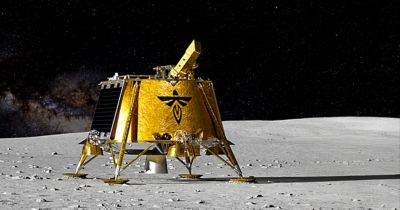

Firefly’s Blue Ghost lunar lander (left) and Elytra Dawn orbital vehicle (right). Credit: Firefly Aerospace.
Shedding Light on Creating Optimized Designs with Ansys Simulation Software
The Firefly team has been integrating Ansys simulation software throughout its diverse products, programs, and disciplines “from day one,” says Oakes. “You’ll see threads of the power of simulation across all of Firefly’s business units.” Today, Firefly uses a variety of Ansys products to address specific needs, one of which is rapidly iterating on designs to reduce time to market.
Ansys software helps Firefly quickly achieve optimized designs. One way that it does so is via Ansys SpaceClaim 3D computer-aided design (CAD) modeling software. For example, this software can help engineers update the design of a bracket in just a few minutes.
As another example of the efficiency benefits, Oakes shares that the Firefly team was able to use Ansys simulation software to take its Specter engine from an idea to hot-firing in only 11 months instead of the typical years that this development process could take. “Simulations help a company like Firefly move faster and be more agile than some of these older companies … especially when you’re talking about spacecraft,” says Oakes.
Simulation software also ensures that these quick analyses are optimized to fit mission parameters. For instance, in composite structure design, you want to be as mass efficient as possible, says Oakes. With simulation software, Firefly can find the minimal amount of mass needed for a functional design. As a specific example, the Firefly team used Ansys Mechanical structural finite element analysis software to build a model in a week, compared with the weeks or months that it would need using another platform. This model can then be used throughout the design and analysis cycle, with the team able to test new modifications and iterate to find the minimal mass possible for its design entirely in Ansys software.
The usefulness of simulation software holds true for all of Firefly’s products. It also enables better communication among engineers of different disciplines by providing a common tool, which is imperative for Firefly’s multidisciplinary team.
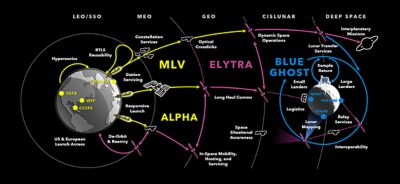
Firefly’s services and locations. Credit: Firefly Aerospace.
Accounting for the Harsh Thermal Environment of Space
To ensure that its designs can handle the harsh temperature ranges they will be exposed to during their missions, Firefly turns to Ansys Thermal Desktop thermal-centric modeling software to study conduction, convection, and radiation. Sweeney says this includes conduction throughout every surface on the spacecraft, convection via the fluids (like propellants) inside the spacecraft, and radiation, which is the primary form of heat transfer in space.
Firefly uses this software to analyze every component of its spacecraft, with a variety of goals in mind. To start with, Thermal Desktop software has built-in functionality to study the orbit around any planetary body, which enables engineers to take a wide view of the entire mission. Sweeney says Firefly used this software to analyze Blue Ghost’s orbit around Earth and the Moon, as well as its landing on the lunar surface. This full-mission study analyzed all temperature environments, including the “room temperature” of Earth’s surface, the heat of launch, the large temperature gradients of space, and the lunar surface. Thermal Desktop software enables Firefly to study how all these “different heating inputs affect the spacecraft,” says Sweeney.
This mission-wide view is aided by Thermal Desktop software’s ability to integrate with Ansys Systems Tool Kit (STK) digital mission engineering software, which enables better collaboration with Firefly’s guidance, navigation, and control (GNC) team. Specifically, after Firefly’s GNC team defines the orbit, “we can take those inputs from the STK software, and because it’s integrated with Thermal Desktop software, that allows us to model our moments very accurately so we can be confident that we are modeling the spacecraft in the correct environment,” says Sweeney. Using this knowledge, Sweeney’s team can make recommendations based on the orbit and generated temperature predictions, such as defining the correct spacecraft orientation to ensure a healthy thermal state during the mission. The GNC team will then take that requirement and modify the orbit definition, continuing the two teams’ intertwined work.
Firefly also uses simulation to provide a detailed view of specific components. “Thermal Desktop software helps inform us about what component temperatures will result from design (changes),” such as changing surface coating colors, says Sweeney. He shares a few other Thermal Desktop software applications, such as using it to help:
- Develop a heat shield for the Blue Ghost lander. This shield will protect components from becoming too hot from the engines.
- Study the dissipated heat generated by the electronic components on a spacecraft (such as computers or avionics boxes), which impact the spacecraft’s overall thermal environment. It’s imperative to ensure that these components are emitting heat at a safe level and to modify their designs if not, such as by using different materials to spread the heat or by altering the electronics layout to avoid localized hot spots.
- Design a thermal control subsystem, which helps Firefly’s products maintain the temperature range they need to function properly. The multiphysics capabilities of Ansys’ software also enabled Firefly to model how much power the spacecraft used because of the thermal control subsystem.
When envisioning the future, the Firefly team pictures space becoming attainable for everyone — and its work will play a role in this vision becoming actualized. As part of this journey, Firefly aims to have its spacecraft provide increasingly affordable and reliable access to space while also supporting more advanced missions. In the short term, this will include performing more launches of Alpha over the next year, the potential for additional Blue Ghost missions and Elytra spacecraft in orbit, and continuing to find “optimal solutions that work for the team as a whole,” says Sweeney.
As a company, Firefly is also particularly focused on growing the next generation of space engineers. One way that the company does this is via Firefly’s Dedicated Research Education Accelerator Mission (DREAM) program, which encourages students to donate excess payload capacity on the Alpha rocket.
Learn how SpaceClaim and Thermal Desktop software can help with your space missions.
Get a sneak peek of the Ansys documentary "Simulating Space."
"You’ll see threads of the power of simulation across all of Firefly’s business units.”
— Brigette Oakes, Vice President of Engineering, Firefly
